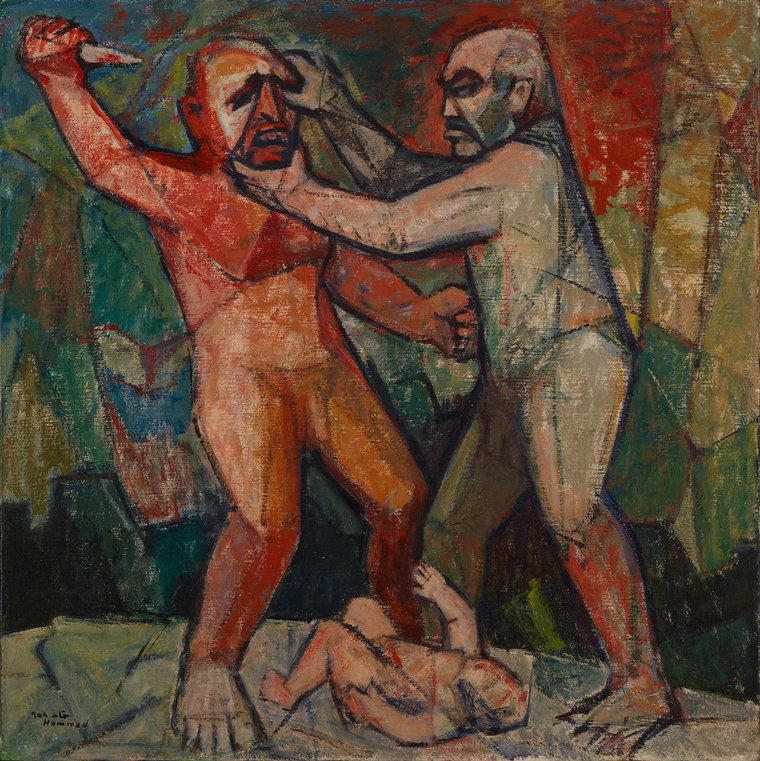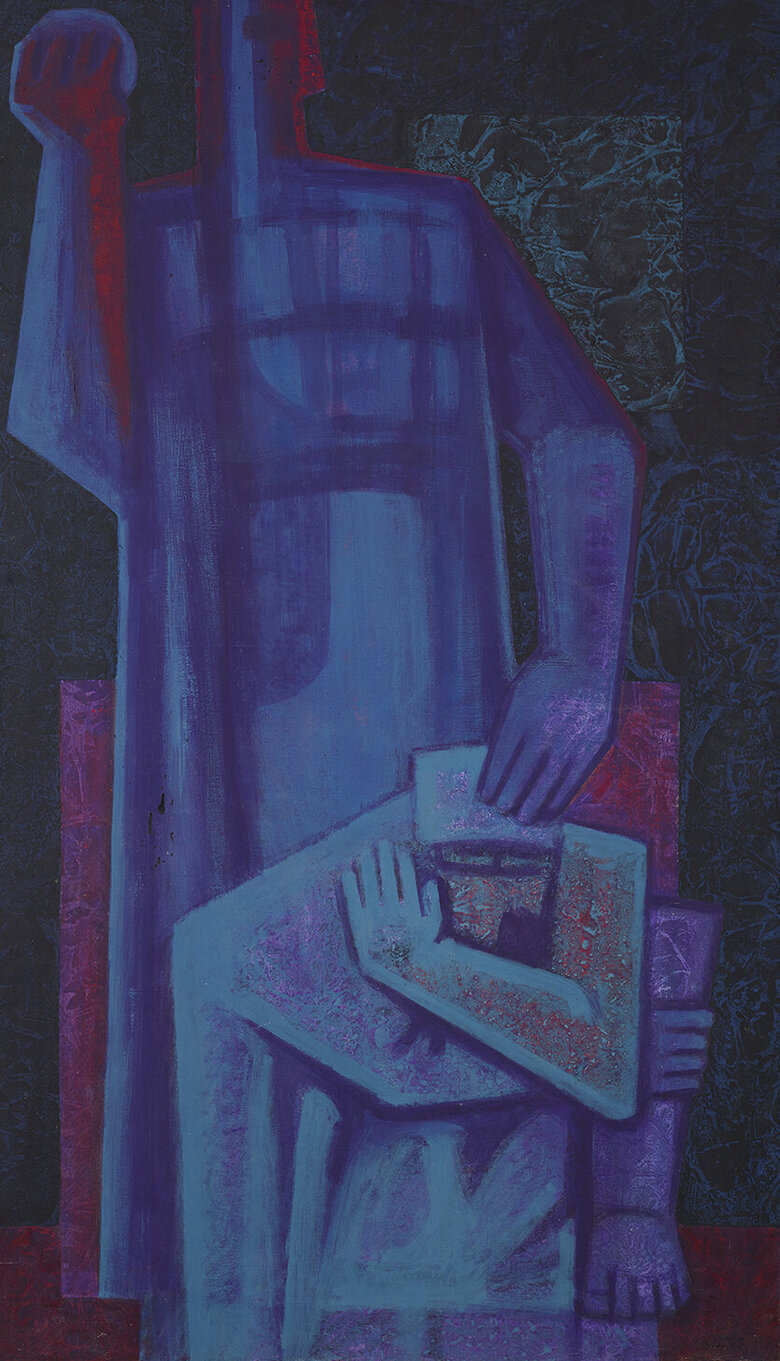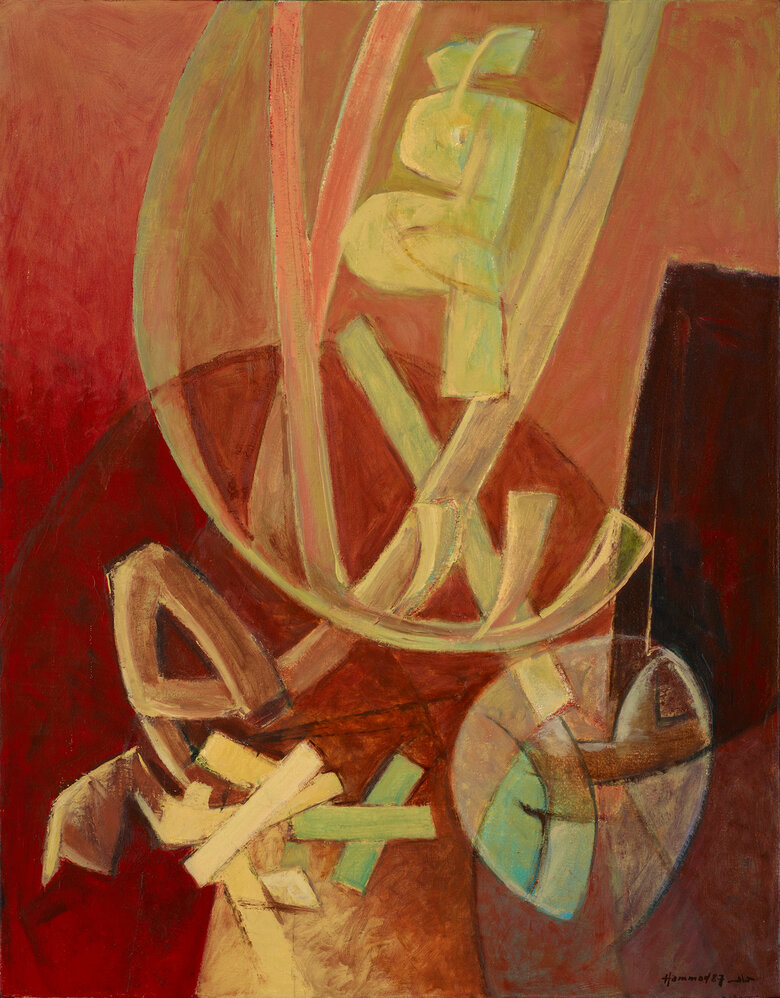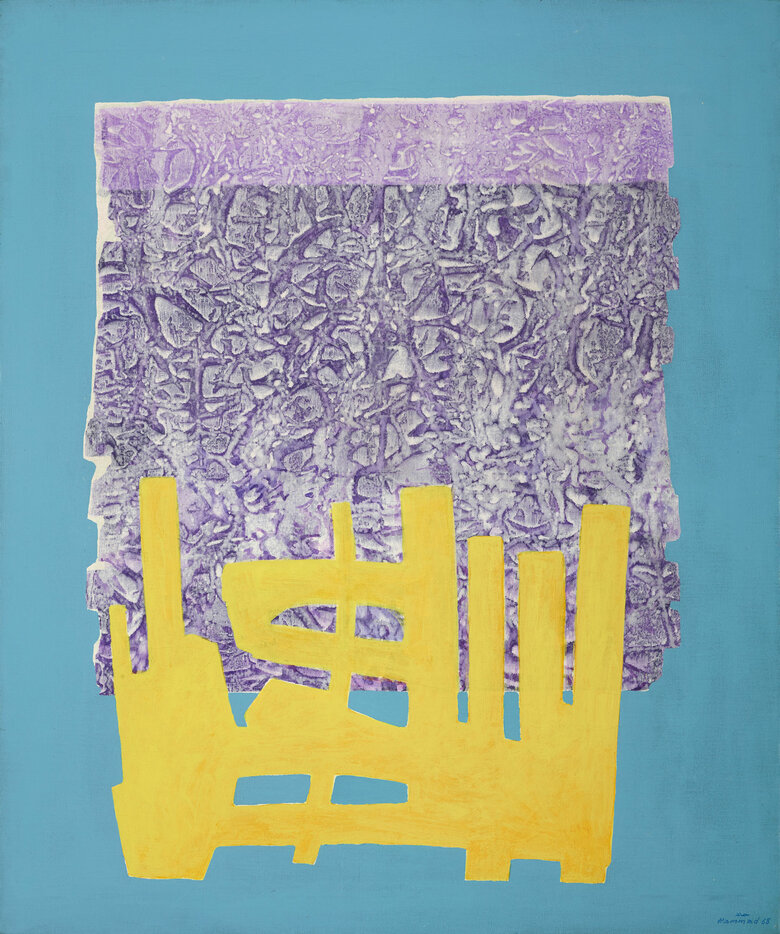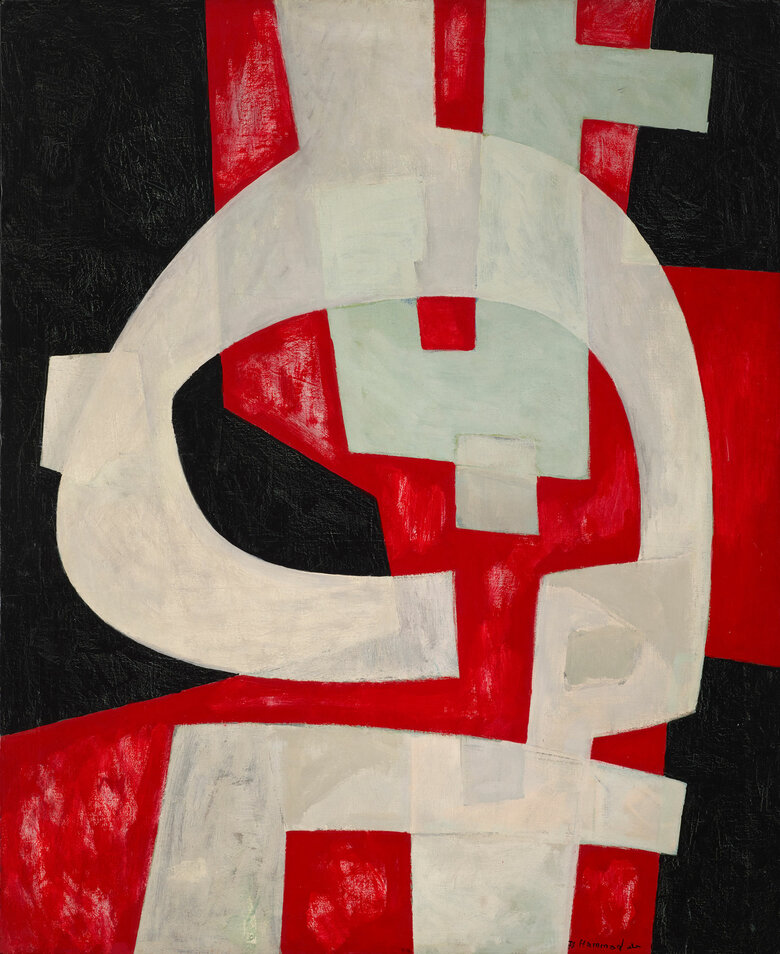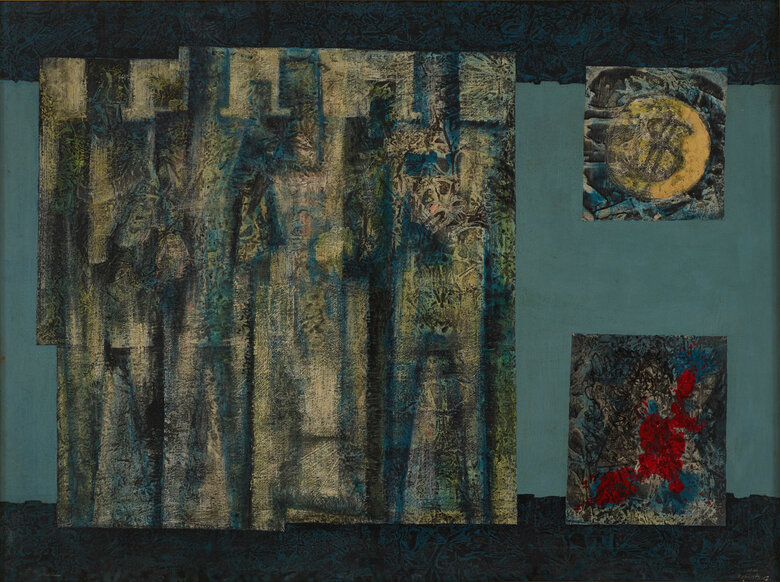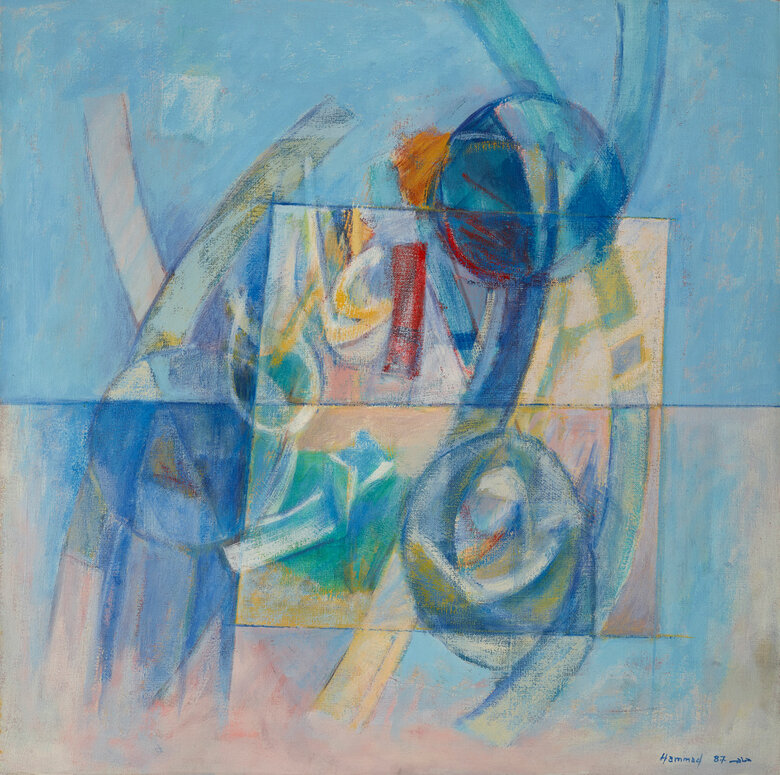Cain & Abel, 1958, depicts two large, nude male figures in a violent, physical confrontation. The figure on the left, rendered in warm reddish tones, grips a sharp object above his head. The figure on the right, painted in cooler greyish hues, wards off the blow with one arm while pulling the other toward himself. At their feet lies an infant rendered in pale flesh tones and positioned on the ground between them. The background consists of richly textured, angular planes of greens, reds, and yellows, suggesting a tense and charged atmosphere. The brushwork is expressive and dense, with impasto highlighting the muscular tension in both figures.
Mahmoud Hammad painted this canvas during the 1950s and 60s, which were the formative decades of Syrian modernism, when artists grappled with universal themes through bold figuration before moving toward abstraction. Known later for his exploration of Arabic calligraphy and color-field abstraction, Hammad’s earlier works, such as this one, demonstrate his command of expressive figural composition. The raw confrontation between the two men and the starkly rendered infant align with his interest in human struggle, moral conflict, and the symbolic weight of myth.
The scene refers to the Biblical account of Cain and Abel, the sons of Adam and Eve, whose quarrel culminated in Cain killing his brother. This is an act often described as the first murder in human history. This primal episode has been retold across cultures as a parable of violence, envy, and the birth of fratricide, making it one of the earliest symbolic massacres recorded in religious tradition. Hammad captures this moment of aggression through the contorted, clashing bodies of the two men. Yet the inclusion of a baby at their feet complicates the traditional iconography. It introduces a sense of vulnerability and generational continuity, suggesting that violence does not end with the immediate act but endangers the innocent and perpetuates cycles of harm. The stark palette and forceful gestures heighten the emotional charge, pressing viewers to reflect on conflict’s destructive reach across both family and society.
Mahmoud Hammad’s striking composition stands out among his body of work for its bold figuration and charged atmosphere. Whether a direct Biblical illustration or a metaphorical tableau, the painting conveys tension through dramatic gesture, piled form, and visceral color. It invites viewers to confront kinship, conflict, and the unseen victims caught in between.
Signed in Arabic and French and dated "958" in Arabic on the lower right front

